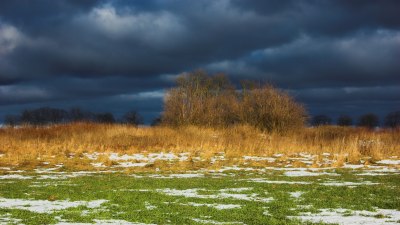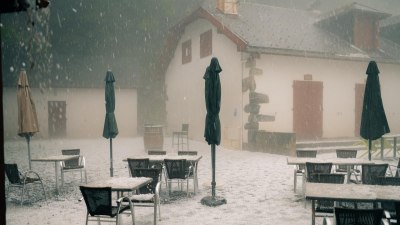Why Some Clouds Look Harmless but Hide a Storm
Discover why certain clouds appear benign yet can conceal severe weather phenomena.

Weather patterns can be as deceptive as they are fascinating, and understanding the complexities of cloud formation is crucial for both meteorologists and the general public. While we often associate specific cloud types with particular weather conditions, some clouds that seem harmless can actually be indicators of impending storms. This article delves into the science behind cloud formation, the types of clouds that can conceal storms, and the importance of being able to recognize these subtle signs in weather patterns.
The Nature of Clouds
Clouds are formed when air rises and cools, causing water vapor to condense into tiny water droplets or ice crystals. They exist in various forms, each representing different atmospheric conditions. The three main types of clouds—cumulus, stratus, and cirrus—can be further classified into numerous subcategories. Understanding these classifications can help us interpret what the sky above is telling us.
Cumulus Clouds: Innocent Yet Potentially Dangerous
Cumulus clouds are those fluffy, white formations that many people associate with beautiful, clear days. They often form during fair weather, leading observers to view them as harmless. However, these clouds can be misleading. As they grow taller and develop into cumulonimbus clouds, they can unleash dramatic weather events. Cumulonimbus clouds are associated with thunderstorms, heavy rain, hail, and even tornadoes. The phrase “an innocent looking cumulus cloud” can be quite ominous if one understands the potential for change.
Stratus and Stratocumulus: The Hidden Risks
Stratus clouds appear as a blanket covering the sky. They can project a calm, tranquil scene; yet they often signal a shift in weather patterns. While stratus clouds generally produce light rain or mist, they can also precede more significant weather changes, such as storm systems moving in from neighboring regions. Stratocumulus, on the other hand, consists of low, lumpy clouds that might also give an illusion of stability while potentially indicating an unstable atmosphere beneath them.
Cirrus Clouds: The Harbingers of Change
Cirrus clouds, thin and wispy, might seem as if they pose no threat. Yet their presence can often hint at a change in the weather. These clouds are high in the atmosphere and can indicate the arrival of a warm front. As a warm front approaches, it can lead to various weather changes including rain, thunderstorms, and dramatic temperature shifts. When it comes to forecasting, cirrus clouds serve as a sign of impending changes that shouldn’t be overlooked.
The Role of Atmospheric Conditions
Various factors contribute to how clouds develop and what weather they may produce. Temperature, humidity, wind patterns, and pressure systems all play a significant role. For instance, when warm air rises into the cooler upper atmosphere, it can create the instability necessary for large storm systems. This rising warm air can produce clouds that look deceptively benign from the ground but are capable of producing severe weather if the right conditions are present.
Understanding Weather Patterns
By gaining a deeper understanding of weather patterns associated with different types of clouds, we empower ourselves with knowledge that helps in anticipating weather changes. Observing shifts in cloud types, movements, and formations can be critical. For example, a sudden change from fair-weather cumulus clouds to towering cumulonimbus formations can be a forewarning of an approaching storm.
Case Studies of Misleading Clouds
Throughout history, there have been numerous instances where seemingly harmless clouds led to unpredicted storms. One example is the “April 2011 tornado outbreak” in the southern United States. Onlookers reported beautiful, clear skies before being caught off guard by severe thunderstorms and tornadoes that formed rapidly from towering cumulus clouds. Such case studies highlight the importance of interpreting cloud formations correctly and staying updated with local weather alerts.
Cloud Observation Techniques
Monitoring cloud developments is akin to reading the weather's mood. Utilizing tools such as anemometers and barometers can provide additional data points. However, honing observational skills concerning clouds can be just as critical. Not only can it increase awareness, but it also enhances our ability to make informed decisions regarding weather safety.
Technological Advances in Meteorology
The evolution of weather forecasting has significantly improved with advancements in meteorological technology. Radar systems and satellite imagery allow meteorologists to track cloud formation in real time, providing crucial data regarding potential storms. Weather apps and broadcasting technologies provide minute-by-minute updates about developing storms, enabling individuals to stay informed.
Staying Prepared
In summary, while many clouds may appear benign, it is crucial to remain vigilant when observing weather patterns. The variations in cloud types and their potential to indicate severe weather should not be underestimated. Awareness and preparedness are key to navigating the unpredictability of nature. By improving our understanding of the atmospheric conditions that contribute to cloud formation and storm development, we can better anticipate the weather's whims and take necessary precautions to stay safe.











